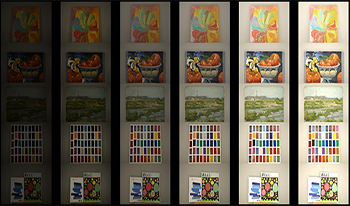
The purpose of this study is to accumulate colour appearance data under high dynamic luminance range. Two experiments were conducted based on different types of stimuli, colour patches and colour images. The colour patch experiment was conducted to match corresponding data between colors on a display and the real scene viewed under high dynamic range viewing conditions. Ten observers assessed 13 stimuli under 6 illuminance levels ranged from 15, 100, 1000, 3160, 10000 to 32000 lux. Observers adjusted the color patches on a display screen to match the color samples of the real scene against of a neutral background (The reflectivity was 35%). The visual results showed a clear trend, an increase of illuminance level raised vividness perception (both increases in lightness and colorfulness). However, CAM16-UCS did not give accurate prediction to the visual results, especially in the lightness direction. The model was then refined to achieve satisfactory performance and to truthfully reflect the visual phenomena. By modifying the lightness induction factor in calculating lightness according to adaptive luminance, the predictions of the model and the visual results had a good agreement in the direction of colour shift. The colour image experiment was carried out using 3 images assessed by 10 observers to test the CAM16-UCS on image generation. The results showed the modified model based on patches do not perform well and a further modification was made to come out a modified CAM16-UCS for images.